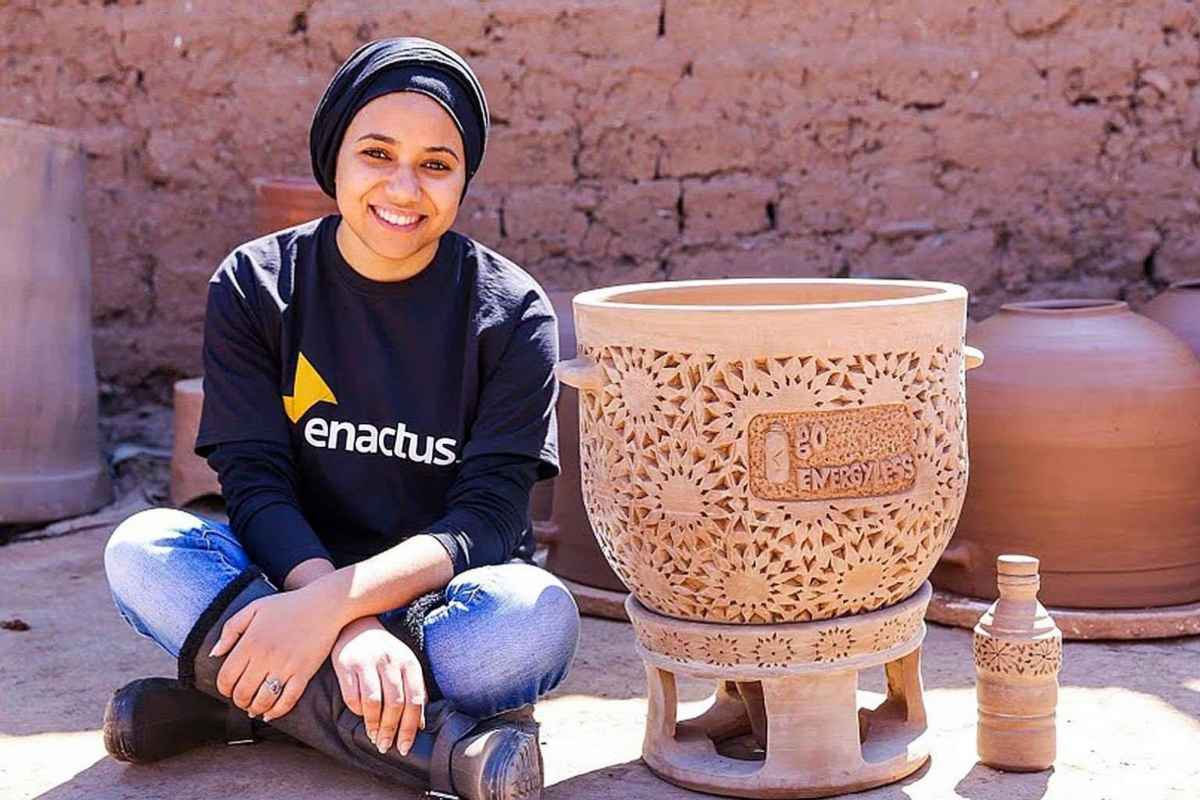Go Energy Less is a perfect fridge for rural areas where there is no electricity: the evaporation of water from the sand dissipates the heat and keeps the temperature inside low

@goenergyless/Facebook
A groundbreaking invention
The Go Energy Less refrigerator is an innovative solution crafted by engineer Raowia Lamhar, aimed at transforming the way food is preserved in electricity-scarce areas of Morocco. Utilizing an age-old preservation method, this desert fridge maintains freshness without any electrical power. As Lamhar explained, Go Energy Less harnesses a traditional conservation technique to keep food cool using no electricity.
Inspiration behind the innovation
In 2015, during a study trip near Khénifra, a remote mountainous region of Morocco, Lamhar encountered communities struggling with the absence of electricity and running water. This challenge sparked the idea for Go Energy Less. “I saw firsthand the difficulty of preserving food and medicine in these conditions,” Lamhar shared, highlighting the dire need for a practical solution.
Design and Functionality
The fridge’s design consists of two differently sized clay pots connected and separated by a layer of wet sand. This setup utilizes evaporative cooling to keep the interior cool.
The evaporation of water from the sand dissipates the heat inside the fridge, maintaining a steady temperature of 43°F in arid areas and 54°F in humid areas,” Lamhar described. This feature is crucial for preserving sensitive items like insulin and other medications.
Medicine preservation made possible
Beyond food, Go Energy Less also significantly impacts medicine preservation, a vital aspect for those with chronic illnesses requiring cool storage for their medications. The fridge operates efficiently as long as the sand is kept moist daily.
Ecoref maintient les aliments au frais et permet de les conserver 10 fois plus longtemps que l’ordinaire, en utilisant…
Posted by Dar tine دار الطين on Saturday, August 15, 2015
Affordable and impactful
Launched in 2016, Lamhar’s company produces two models of the refrigerator: one for rural areas priced at 220 dirhams and another for urban settings at 500 dirhams. These affordable options have provided a sustainable and practical solution for food preservation across Moroccan communities, thus improving their quality of life.
Global environmental impact
The refrigerator’s ability to preserve without electricity has not only benefited Moroccan communities but has also caught the attention of environmentalists worldwide. “Its effectiveness in food preservation makes it an appealing choice even for urban households, helping to lessen the environmental impact of conventional electric refrigerators,” Lamhar noted.
The Go Energy Less refrigerator offers a beacon of hope and innovation in regions where electricity is a luxury, proving that sustainable practices can profoundly affect daily life and environmental health.
